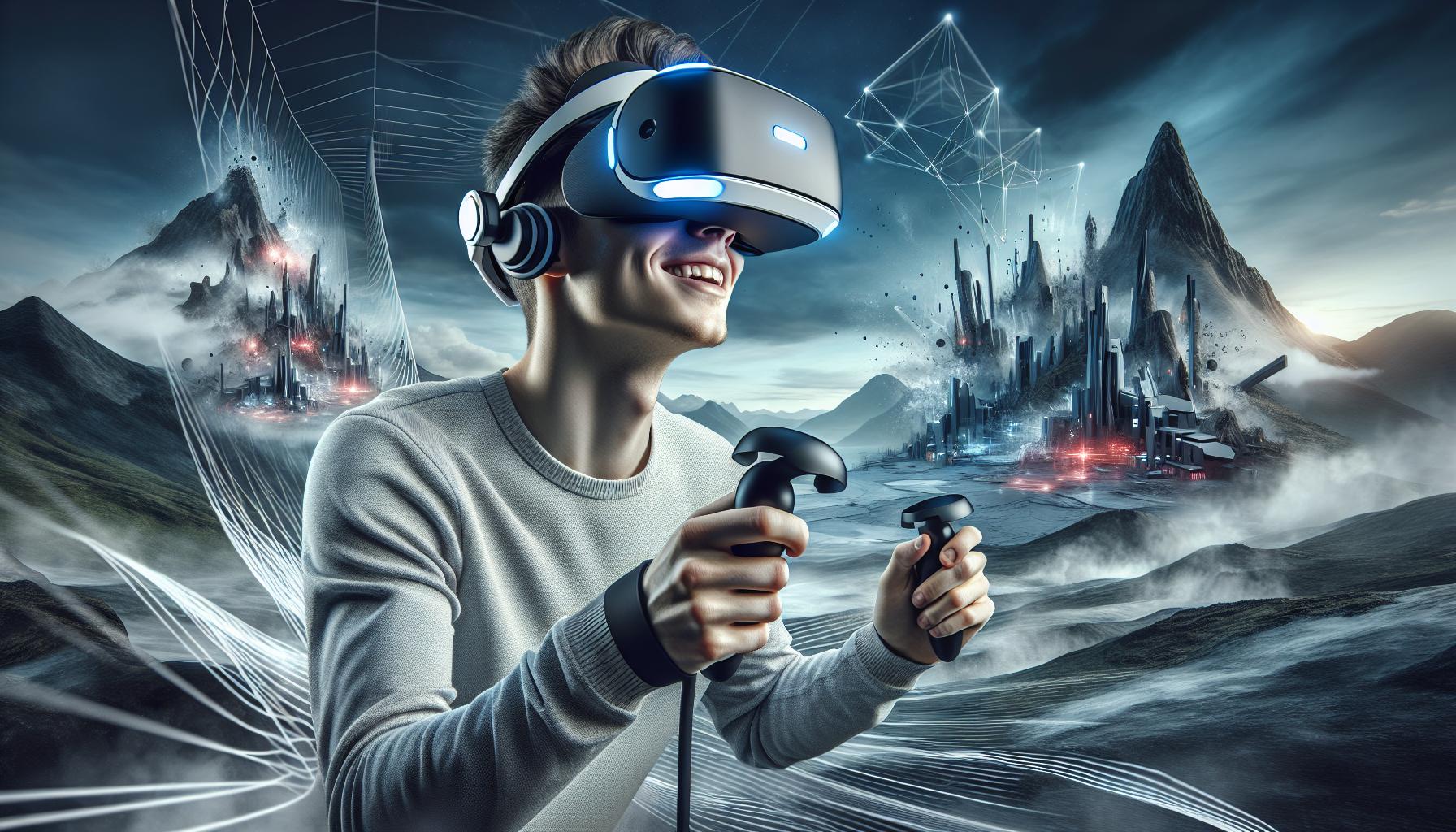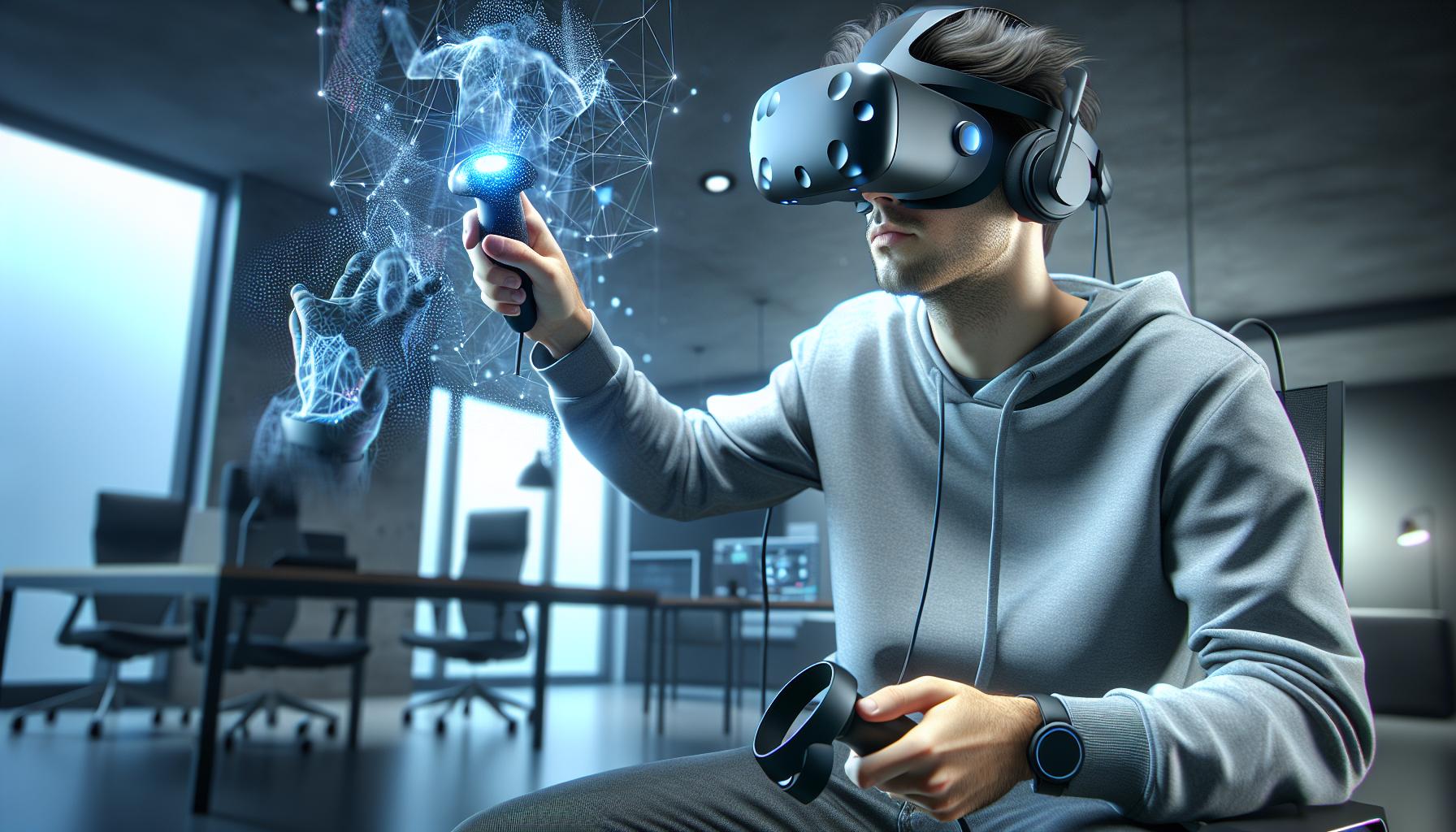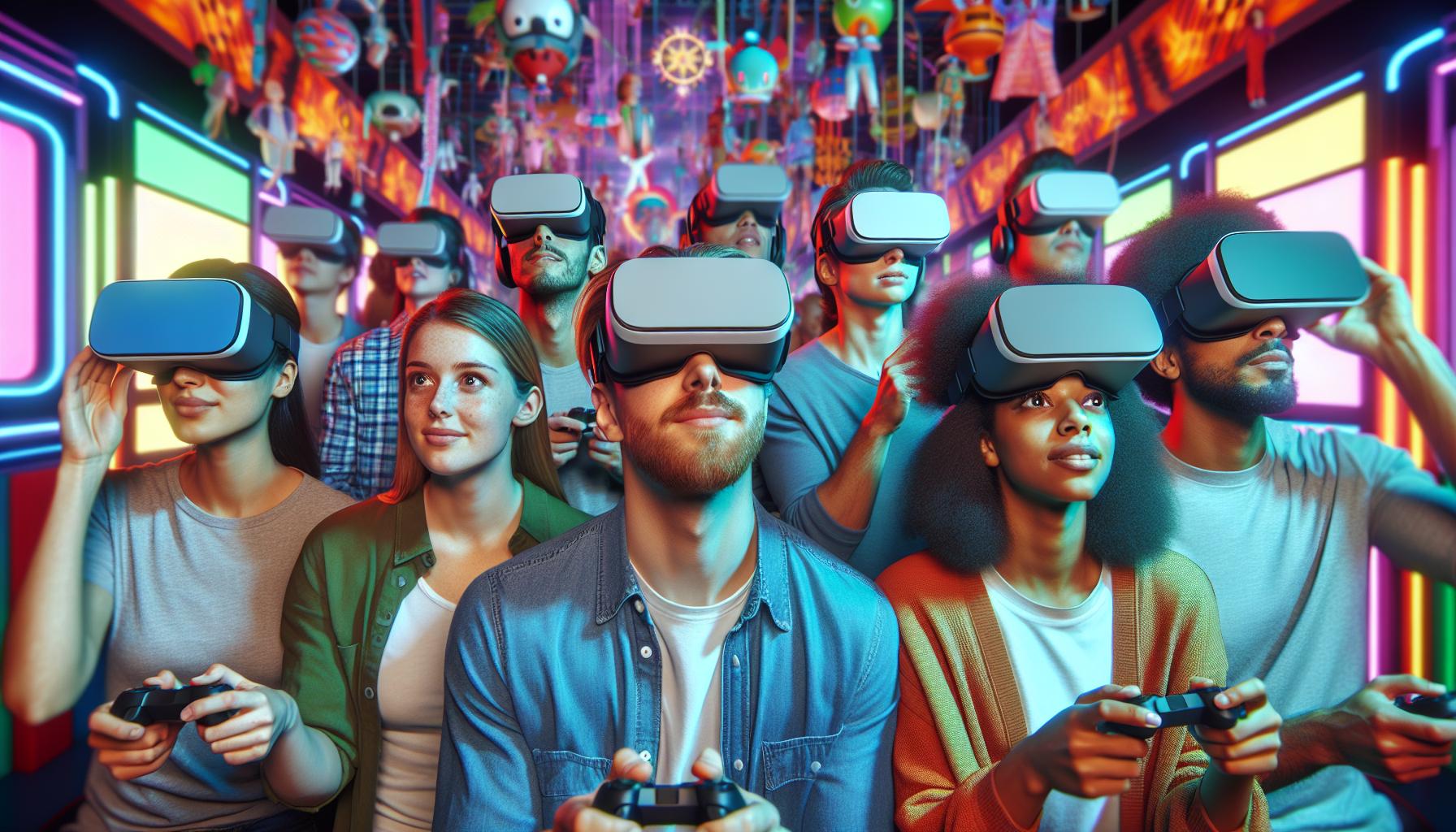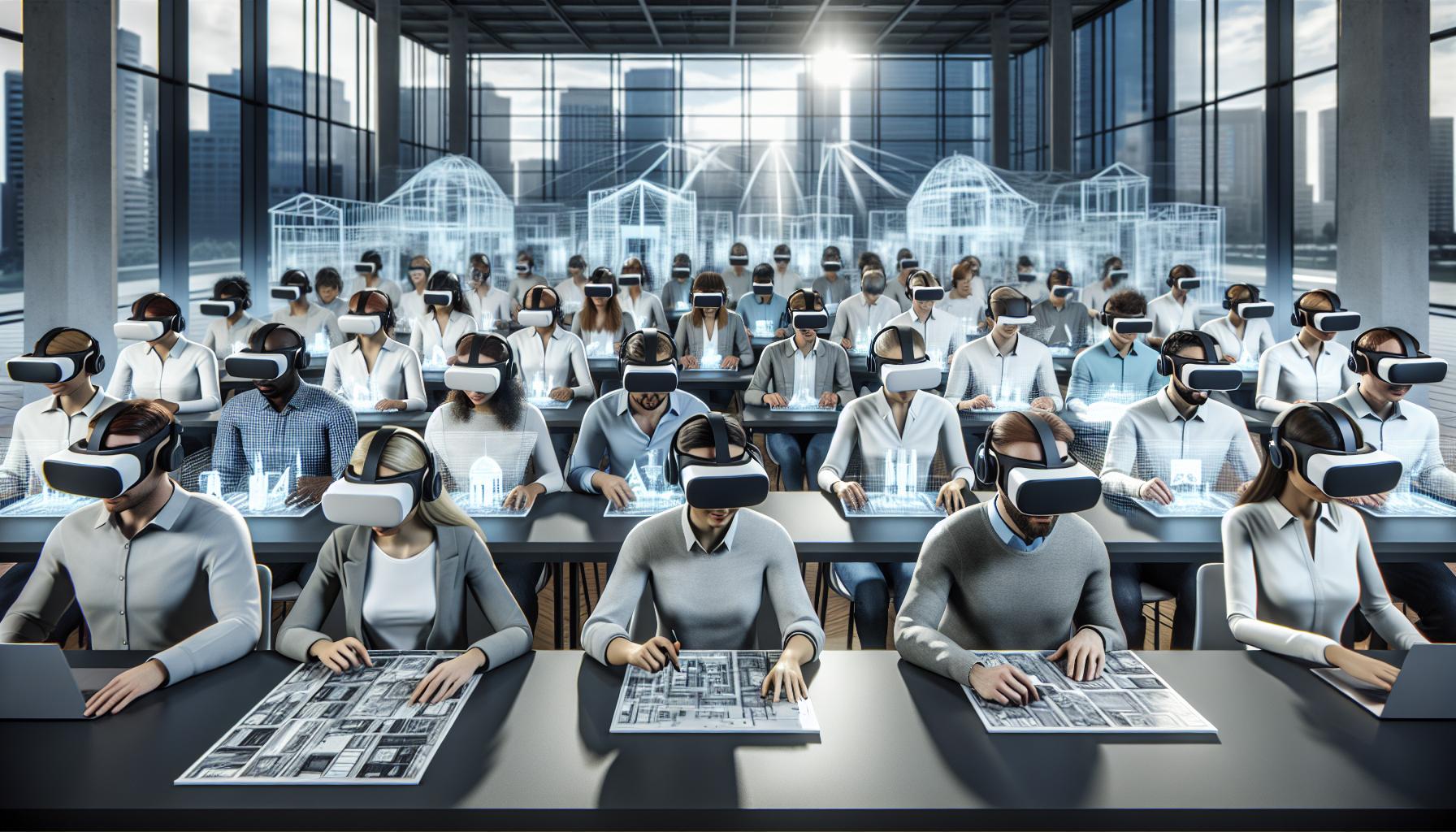
What Is Immersive Virtual Reality? A Complete Guide to the Future of Digital Experience
Virtual reality has come a long way from those clunky headsets of the 90s that made everyone look like they were wearing a microwave on their face. Today’s immersive VR technology transforms ordinary spaces into extraordinary digital realms where users can touch, feel and interact with virtual environments as if they were actually there.
Step into a world where the boundaries between reality and digital fantasy blur seamlessly. Immersive virtual reality doesn’t just show users a different world – it lets them become active participants in fully-realized digital environments. From scaling Mount Everest in your living room to performing complex surgical procedures in a risk-free setting, VR’s applications span far beyond gaming and entertainment.
What Is Immersive Virtual Reality
Immersive virtual reality technology creates complete digital environments that engage multiple senses simultaneously. These systems combine specialized hardware and software to generate realistic 3D experiences that respond to user movements and interactions in real-time.
Key Components of VR Systems
A complete VR system integrates five essential components for immersive experiences:
- Head-Mounted Display (HMD): High-resolution screens with motion sensors track head movements for 360-degree visual feedback
- Motion Controllers: Handheld devices that enable natural interaction with virtual objects through precise tracking
- Base Stations: External sensors that monitor user position and movement within the designated play area
- Processing Unit: Powerful computers or dedicated consoles that render graphics and process user inputs
- Audio System: Spatial audio devices that provide directional sound cues matching the virtual environment
Types of VR Experiences
Virtual reality experiences fall into three distinct categories:
- Non-immersive VR: Desktop-based experiences viewed through traditional screens with minimal sensory engagement
- Semi-immersive VR: Projection-based systems like flight simulators that combine physical controls with virtual displays
- Fully-immersive VR: Complete sensory experiences using HMDs that isolate users from the physical world
- Visual immersion (90-degree to 360-degree field of view)
- Interaction methods (keyboard to motion controls)
- Environmental feedback (basic visuals to haptic responses)
- User movement tracking (stationary to room-scale)
How Immersive Virtual Reality Works

Immersive virtual reality creates a believable digital environment through synchronized hardware components and sophisticated software algorithms. The interconnected systems work together to deliver real-time responses to user movements and interactions.
Display and Visual Elements
The head-mounted display (HMD) creates stereoscopic 3D images by presenting slightly different angles to each eye through dual LCD or OLED screens. Modern VR displays feature high resolutions up to 4K per eye with refresh rates of 90-120Hz to minimize motion sickness. Advanced optics like Fresnel lenses expand the field of view to 110 degrees or more, matching natural human vision. Eye-tracking sensors in premium headsets adjust image rendering based on where users look, creating realistic depth of field effects while optimizing performance.
Motion Tracking and Controllers
Motion tracking systems use infrared sensors or cameras to map user movements with submillimeter precision in 6 degrees of freedom. Base stations placed in opposite corners emit invisible laser sweeps that controllers and headsets detect to determine exact positions. Touch controllers replicate hand gestures through capacitive sensors buttons gyroscopes accelerometers providing haptic feedback for increased immersion. Inside-out tracking cameras on newer headsets eliminate external sensors by identifying environmental features to calculate movement with computer vision algorithms.
Applications of Immersive VR

Immersive virtual reality transforms multiple industries through practical applications that enhance human experiences. The technology creates opportunities across various sectors with measurable impacts on productivity engagement.
Gaming and Entertainment
Virtual reality gaming delivers interactive digital experiences through 360-degree environments where players control their characters using motion tracked controllers. Popular VR games like “Half-Life: Alyx” “Beat Saber” generate real physical responses from players through natural movement mechanics. Major gaming platforms including Steam PlayStation VR offer extensive libraries of VR titles spanning action adventure puzzle simulation genres. VR arcades provide multiplayer experiences where groups interact in shared virtual spaces. Entertainment applications extend to virtual concerts museums theme park experiences allowing audiences to engage with content from any location.
Education and Training
Educational institutions implement VR technologies to create hands on learning environments for complex subjects like anatomy chemistry engineering. Medical students practice surgical procedures in risk free virtual operating rooms while tracking their performance metrics. Corporate training programs utilize VR simulations to teach equipment operation safety protocols emergency response procedures. Flight schools military academies employ sophisticated VR cockpit simulators for pilot certification. Architecture students visualize design concepts by walking through virtual buildings before construction begins. Interactive language learning programs immerse students in virtual conversations with native speakers across cultural settings.
Benefits and Advantages of Immersive VR

Immersive virtual reality delivers measurable improvements in learning retention, with studies showing a 75% increase compared to traditional methods. Users master complex skills 4x faster through VR training programs that provide hands-on practice in risk-free environments.
Enhanced spatial awareness transforms design visualization, enabling architects to detect structural issues before construction begins. Medical professionals practice intricate procedures without patient risk, reducing surgical errors by 40% through repeated virtual simulations.
| VR Training Benefits | Improvement Rate |
|---|---|
| Learning Retention | 75% increase |
| Skill Mastery Speed | 400% faster |
| Surgical Errors | 40% reduction |
| Cost Savings | 50% decrease |
Remote collaboration features eliminate geographical barriers, reducing travel costs by 50% while maintaining team productivity. Virtual meetings create shared spaces where participants interact with 3D models data visualizations.
Psychological applications demonstrate significant therapeutic value:
- Treating phobias through controlled exposure therapy
- Managing chronic pain by redirecting patient focus
- Reducing anxiety disorders with immersive relaxation techniques
- Supporting rehabilitation through gamified exercise programs
Business operations benefit from VR integration:
- Creating virtual showrooms for product demonstrations
- Testing consumer behavior in simulated retail environments
- Training employees in customer service scenarios
- Prototyping products without physical manufacturing
The technology’s sensory engagement capabilities enhance user focus by blocking external distractions creating deeper immersion levels. This increased engagement leads to improved information retention performance metrics across educational corporate training programs.
Challenges and Limitations
Technical limitations impact current VR systems through display resolution constraints, motion tracking latency issues, and limited field of view angles. High-quality VR headsets display 2160 x 2160 pixels per eye, yet users can still detect individual pixels at close range.
Motion sickness affects 40-70% of VR users during extended sessions due to sensory conflicts between visual and vestibular systems. Common symptoms include:
- Nausea
- Dizziness
- Disorientation
- Eye strain
- Headaches
Hardware requirements create barriers to widespread adoption:
- Graphics cards costing $300-$1000
- Powerful processors (Intel i5/i7 or equivalent)
- Minimum 8GB RAM
- Dedicated VR space (6×6 feet)
Physical constraints restrict user mobility:
- Tethered headsets limit movement range
- Cable management affects immersion
- Battery life (2-3 hours) for wireless units
- Heat buildup during extended use
Cost factors remain significant:
| Component | Price Range |
|---|---|
| VR Headset | $300-$1000 |
| Controllers | $100-$300 |
| Base Stations | $200-$400 |
| Required PC | $1000-$2000 |
Software development faces multiple hurdles:
- Complex programming requirements
- Cross platform compatibility issues
- Limited standardization across devices
- Resource intensive content creation
Social interaction limitations persist in virtual environments:
- Facial expression recognition challenges
- Limited haptic feedback
- Reduced nonverbal communication cues
- Network latency affecting multiplayer experiences
These technical, physical, and social challenges influence VR adoption rates and user experience quality across various applications.
Future of Immersive Virtual Reality
The next generation of immersive virtual reality integrates advanced technologies like artificial intelligence (AI) enhanced graphics processing units (GPUs) that render photorealistic environments in real time. Haptic feedback systems create tactile sensations through ultrasonic waves, enabling users to feel virtual objects without wearing gloves.
Mixed reality capabilities blur the lines between virtual and physical worlds by incorporating augmented reality (AR) elements into VR experiences. Eye tracking technology enables foveated rendering, which focuses processing power on the user’s direct line of sight while reducing detail in peripheral vision.
| Technology Advancement | Expected Timeline | Impact |
|---|---|---|
| 8K per eye resolution | 2024-2025 | 4x clearer visuals |
| Wireless 6G streaming | 2026-2027 | < 1ms latency |
| Neural interfaces | 2028-2030 | Direct brain control |
| Holographic displays | 2025-2026 | No headset needed |
Social VR platforms evolve into persistent virtual worlds where users maintain digital identities across platforms through blockchain technology. Enterprise applications expand into collaborative workspaces with realistic avatars that capture facial expressions and body language through advanced sensors.
Emerging developments include:
- Volumetric video capture for creating lifelike 3D recordings
- Compact neural processing units dedicated to VR computations
- Biodegradable materials for environmentally conscious hardware
- Quantum computing integration for complex physics simulations
- Cross platform compatibility through universal VR standards
Hardware miniaturization leads to lightweight contact lens displays paired with brain computer interfaces for intuitive control. 5G and upcoming 6G networks enable cloud rendered VR experiences streamed directly to mobile devices without local processing requirements.
Immersive Virtual Reality Technology
Immersive virtual reality stands at the forefront of technological innovation transforming how people interact work and learn. From gaming enthusiasts to medical professionals this groundbreaking technology continues to push boundaries and create new possibilities.
While current limitations like motion sickness and hardware constraints pose challenges the future of VR looks promising. Upcoming advancements in resolution haptic feedback and wireless connectivity will drive wider adoption across industries.
As VR technology evolves it’s poised to become an integral part of daily life offering unprecedented opportunities for connection learning and innovation. The journey from simple headsets to fully immersive experiences demonstrates VR’s potential to reshape human interaction with digital worlds.
